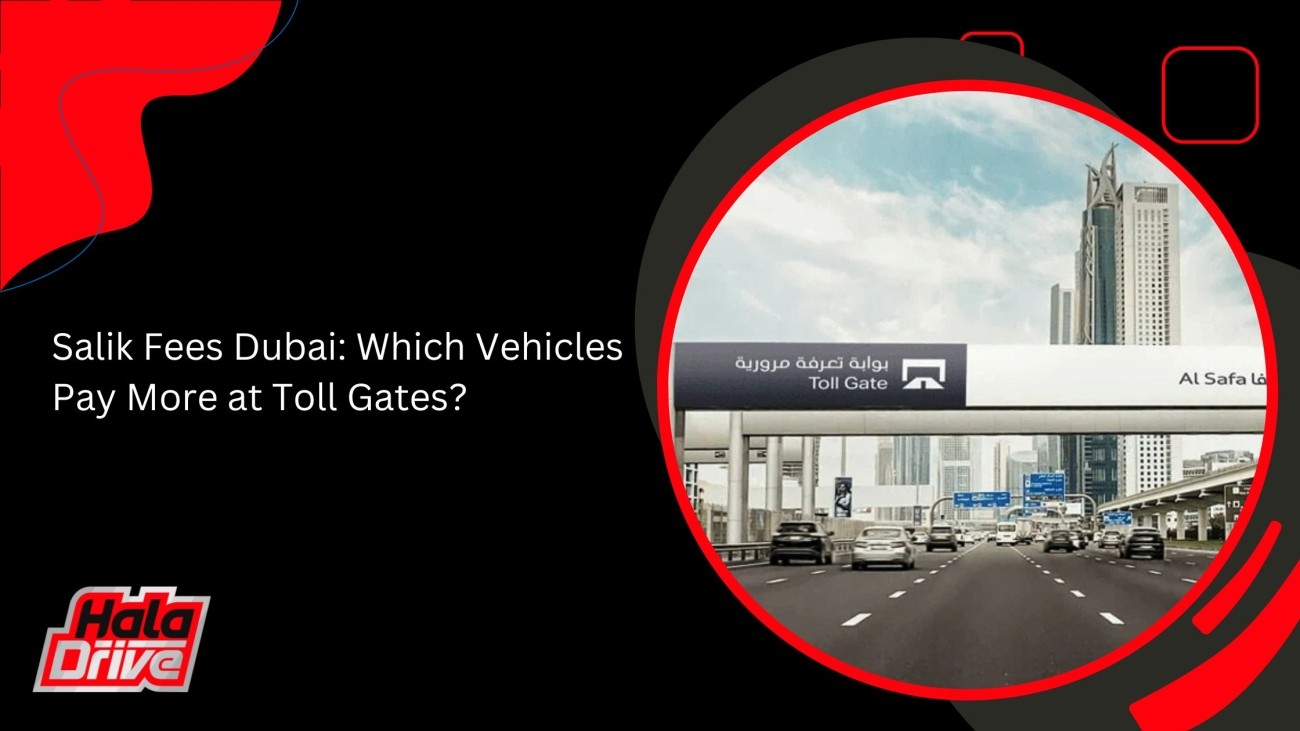Blogs
 10 May 2025
10 May 2025
Dubai maintains its global reputation through its efficient infrastructure. It delivers an advanced public transport system alongside modern highways and efficient toll systems to control traffic flow with backing road maintenance.
Salik serves as one of Dubai's most recognizable toll collection systems. The Dubai authorities launched Salik Fees system in 2007. It derives from an Arabic term meaning 'clear' for its purpose to solve traffic congestion and improve transportation performance.
Do all vehicles pay the same Salik Fees Dubai? Drivers commonly ask about this issue because they either live in Dubai as newcomers or not familiar with the many vehicle-specific fee rules. The response is more complex than a simple yes or no solution. The toll charges a driver pays for Salik usage depend on multiple elements. This post explores the Salik Fees Dubai systems along with their vehicle-based differential structures while discussing essential points related to residents and visitors.
.jpg)
Before examining whether Salik Fees Dubai have unified rules for all vehicular usage it becomes essential to define both the Salik system and its operational processes. The Salik system functions through radio-frequency identification (RFID) technology to perform automatic top-up fees at designated toll gates (Salik toll points). The toll gates operated by the Salik system exist throughout the various busy routes across Dubai including Sheikh Zayed Road, Al Khail Road and multiple other areas.
All vehicle requires a windshield-mounted Salik tag which serves as a rectangular adhesive device to function with the system. The tag activates a communication protocol with the sensors at toll gates which triggers the deduction of charging fees from drivers' linked Salik account. The system warns drivers when their Salik account balance is low and subsequent fines may apply in this situation.
.jpg)
In most instances drivers must pay an AED 5 Salik Fees Dubai to pass toll points. All types of vehicles including passenger cars trucks and motorcycles will pay the same fee at Salik toll points. The actual toll costs that drivers need to pay depend on various influencing factors.
.jpg)
The short answer is no. Generally, all vehicles are charged AED 5 at every Salik toll point but some specific type of vehicles must follow different payment systems according to their class identity. Toll charges vary mainly because of the vehicle classification.
a. Passenger Cars (Sedans, Hatchbacks, etc.)
Nearly all commuters face the Salik Fees Dubai i.e., of AED 5 throughout the city. Most vehicles classified as passenger cars including sedans and hatchbacks together with small SUVs need to pay the standard toll rate of AED 5. The standard Salik toll cost stands at AED 5 for standard passenger car owners who pass through Salik points.
b. Motorcycles
The standard AED 5 Salik Fees Dubai applies to motorcycles as they gain popularity in Dubai because they conserve fuel and serve as excellent urban traffic vehicles. Dubai does not provide discounts or free passes to motorcycles and their users must pay the same toll fees as car motorists.
c. Heavy Vehicles (Trucks, Buses, and Large Vans)
Passenger cars receive standard toll fees but heavy vehicles including trucks buses along with commercial vehicles must pay multiple tolls. The base toll rate of AED 5 continues to apply yet heavyweight vehicles require repeated tolls following mandated dimensional and weight criteria.
Trucks and Large Vans:
Large trucks and heavy vans fall under this category of “heavy vehicles” for toll salik fees and their toll charges are determined by dimensions and weight measurements. So, those who driving heavy vehicles find themselves responsible for paying double or even triple the standard salik fee during their route through the toll points. This is because the heavy vehicles lead to significant damage of road infrastructure.
Buses:
Private buses and public buses together with heavy trucks follow equal salik fee criteria. Public buses under the administrative control can benefit from subsidiaries.
d. Electric Vehicles (EVs)
The administration of Dubai implements incentives for electric vehicles (EVs) to support sustainability because the authorities want to promote environmentally friendly transportation.
This initiative provides electric vehicle owners to get a free access to Salik toll payments or limited relief to Salik Fees Dubai. The authorities shape these incentives to promote clean energy vehicle adoption while reducing environmental emissions throughout its territory.
Electric vehicles such as Tesla models along with others operating under the EV category currently receive free passage through most Salik toll points throughout Dubai. Government policies regarding sustainable transportation could lead to future changes in electric vehicle toll exemptions.
e. Exemptions for Certain Vehicles
The Government grants Salik Fees Dubai exemptions to particular vehicle categories including vehicles operated by emergency services or those deployed for official governmental work. For example:
These emergency vehicles receive salik free toll passage because of their indispensable role in keeping the public safe. So, the toll barriers will not delay the rapid movement of exempt vehicles because of this special allowance.
.jpg)
a. Residents
All necessary Salik system operations become accessible to those who reside in Dubai after completing the registration and loading their account with funds. When you register a Salik tag for use and fund it with money you can freely access the tolling system independently.
Also, the Salik fees for residents depend solely on the type of vehicle while the fee remains same and show no variation between resident fees and local fees.
b. Tourists
Tourists may experience slightly different conditions regarding Salik Fees Dubai. The Salik toll system functionally needs tourists to make payments as residents do, although they face some difficulties about salik fee payment methods. All rental car companies servicing tourists should include a Salik tag as standard equipment to cover their toll fees. A customer must pay Salik toll fees to rental companies either through direct payment or deposit deduction. Personal vehicle owners entering the UAE through Salik regulations must prepare their own tags for the system.
Vehicle owners in Dubai can easily operate their Salik account management system. Here’s what you need to know:
Not keeping enough balance in a Salik account or operating an unregistered vehicle for Salik usage may result in penalty or certain charges. The standard salik fees or penalty amount for inadequate Salik tag or depleted account balance stands at AED 100. Salik fees default leads to accumulating additional fines for those who continue to avoid payment.
Salik fees in Dubai are generally straightforward, but they do vary based on the type of vehicle you drive. Most passenger vehicles pay the standard toll fee of AED 5, but heavy vehicles, motorcycles, and certain other vehicle categories may be subject to different charges. Additionally, there are exemptions or discounts for specific vehicles like electric cars and government vehicles. For residents and tourists alike, managing Salik is easy, but it is essential to stay aware of the fees and penalties associated with using the system.
Whether you’re commuting for work, traveling as a tourist, or operating a business in Dubai, understanding the nuances of Salik fees will help you better manage your driving costs and ensure that your trips are as smooth as possible.

Your trusted partner for affordable and luxury car rentals across Dubai and the UAE. Drive with confidence and convenience every time with well-maintained vehicles, flexible booking options, and 24/7 customer support designed to keep your journey smooth.